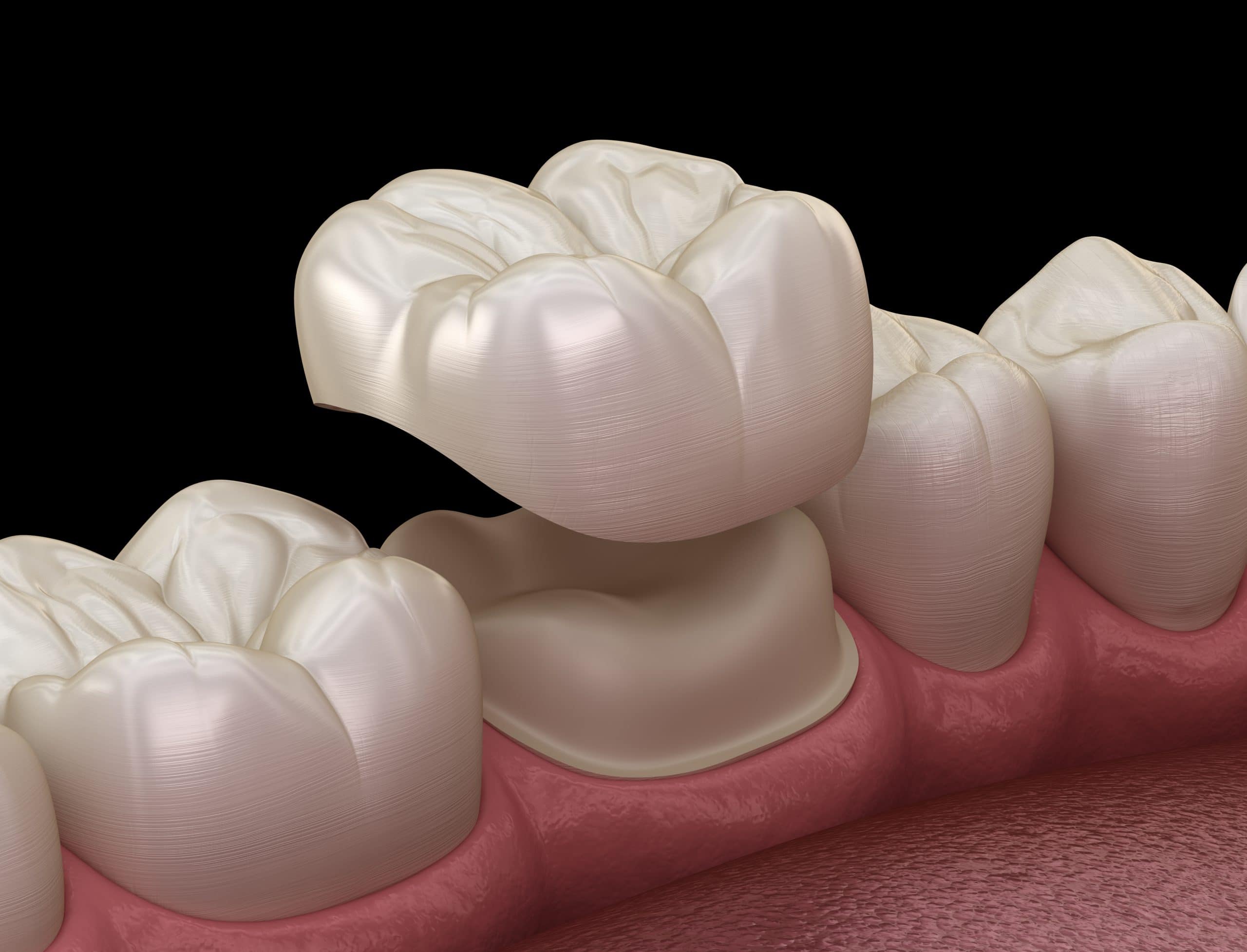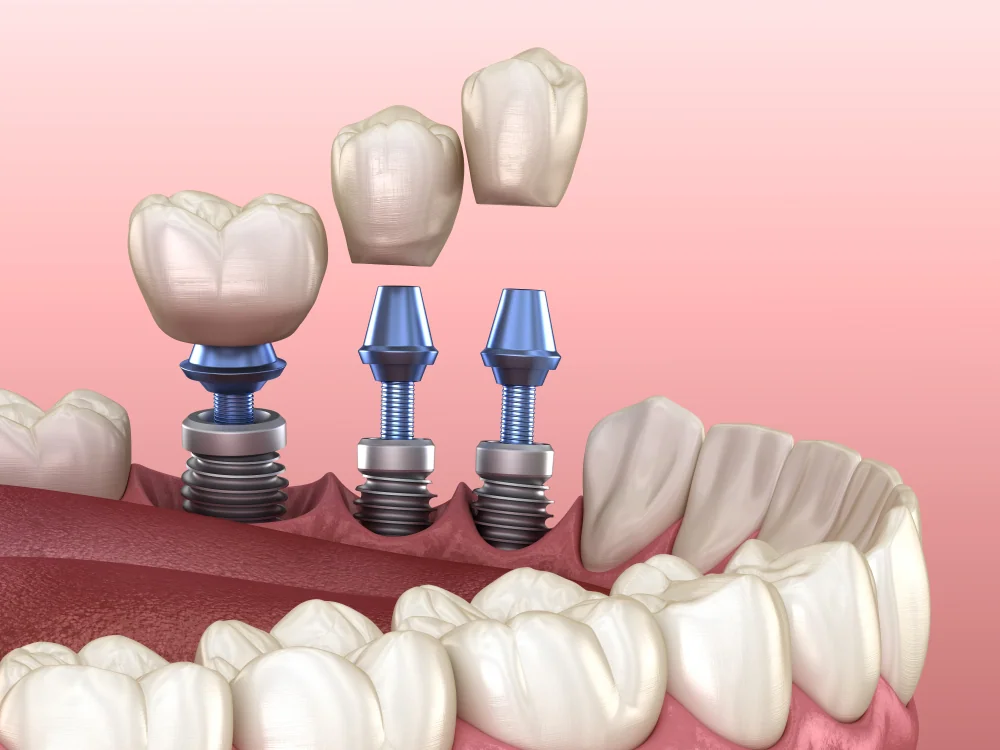Dental Crowns vs. Veneers: Which is better
- Posted on Nov. 7, 2023
- Health
- Views 114
Embarking on a journey to enhance your smile? Most likely, your dentist will offer various solutions, including dental crowns and veneers. To make an informed choice, delve into the details of both procedures.
Read More

Crowns and Veneers: Which is What?
Confusion may arise when distinguishing two procedures – both serve as dental restoration methods. The main distinction lies in the issues they heal.
Crowns: Full Protection for Missing Teeth
According to The American Dental Association, veneers specifically conceal the front of the tooth, whereas crowns provide complete coverage and protection for the entire tooth. Samantha Rawdin, D.M.D., a New York-based prosthodontist explains that “a crown is a dental restoration that covers most or all of the tooth surface that is exposed in the mouth.” Thus, they provide complete protection for the teeth and are used “when a large portion of the tooth is missing or broken down due to decay, trauma or developmental defects.
Veneers: Best For Milder Tooth Repairs
Dr. Rawdin claims that veneers are rather aesthetic than a protective instrument: “a veneer typically covers just the front surface of the tooth, serving to improve the tooth’s appearance, and is not used to correct major issues ” adds Dr. Rawdin.
They look like small shells that cover the upper surface of the tooth, covering small cracks or gaps between teeth. veneers, on the other hand, are thin, tooth-like shells, made of porcelain or resin composite materials, designed to cover the front surface of the tooth. They are still protective but serve rather to improve a patient's appearance.
The Difference in Procedures
Both veneers and crowns take several appointments to be installed. The dentist has to examine the situation, prescribe pre-care including medication, and make sure the condition of teeth after the procedure meets the requirements. However, there are differences.
Crowns: Individual Manufacture and Teeth Reshaping
Putting crowns, the client must be ready for several steps:
- Since putting crowns is a medical procedure, first the patient’s tooth should be treated. The dentist may perform tooth filling or prescribe medication.
- Next, the doctor must prepare the damaged tooth for the crown. This often involves reshaping the tooth's surface – such a procedure is a key difference of a crown.
- The tooth itself then serves as a model to create the final crown.
- A temporary crown is placed over the prepared tooth to protect it.
- Once the permanent crown is ready, it is checked for a proper fit and is then securely attached using dental cement.
Veneers: Copying Your Teeth’ Surface
- With the help of a local anesthetic like novocaine, a person's teeth undergo a minimal reduction by removing about half a millimeter of enamel.
- Simultaneously, an impression of the prepared teeth is taken.
- While the dental lab works on crafting the actual veneers (which can take up to two to three weeks in some cases), temporary veneers are placed on the individual's teeth.
- When the custom veneers are ready, the dentist fits them into the mouth.
- If the person is satisfied with how the veneers look, they are permanently attached to the underlying teeth.
Samantha Rawdin says the procedure can be done in two visits only. However, if the customer isn’t fully satisfied with the result, “they will need to be sent back to the laboratory and the patient will require another appointment.”
Benefits and Risks of Dental Crowns and Veneers
In addition to different purposes, these procedures show various advantages and drawbacks. Understanding what to expect, the patient can easily decide which one to choose.
Get a Natural Look with Crowns
First things first, crowns are a solution for dental diseases and injuries, which makes them beneficial for people who need treatment. Other benefits include long service life and natural appearance – crowns of a high quality look like natural teeth.
However, all crowns need replacement in 5-10 years and do not fully prevent you from dental conditions like cavities.
|
Advantages |
Drawbacks |
|
Protects the whole tooth by covering it |
Must be replaced in 5-10 years |
|
Heals and protects teeth from cavities and other diseases of the oral cavity |
Takes several appointments to be installed |
Veneers: Shape Adjustment and Easy Procedure
Veneers are a perfect choice for a beautiful smile. They go in different colors and shapes and are often used as an accessory, protecting the teeth in addition. The procedure of putting veneers isn’t painful since it doesn’t require teeth reshaping.
As well as crowns, they demand care and regular visits to your doctor.
|
Advantages |
Drawbacks |
|
Come in different shapes and color |
Cannot be covered by the insurance |
|
Easy to install |
do not heal oral diseases |
Price of Crowns and Veneers
Both options can be expensive for the patient, and in both options, prices vary depending on your location, denture material, additional procedures, and in the case of veneers, customization as well. The key difference is that crowns can be paid for with insurance, as they are considered a medical procedure.
Crowns Price
Dr. Rawdin says, the average price for one crown is $2000 and varies from $1000 to $4000 depending on the state. Another factor to consider is tooth placement – usually, front teeth are harder to make. However, dental insurance may cover the dental crown cost itself or even sponsor accompanying procedures.
Veneers Price
Veneers are more pricey, starting from $1500 for the simple model and up to $5000. Veneers cost also cannot be covered by the insurance, being rather cosmetic than a medical procedure.
Quick Observation: Choosing Between Crowns and Veneers
|
Crowns |
Veneers |
|
|
Problem they solve |
teeth injuries, cavities |
small cracks, teeth spaces |
|
Cost |
from $1000 to $4000 for a single crown |
from $1500 and more depending on customisation |
|
Benefits |
natural appearance, diseases treatment, dental crowns cost may be covered by dental insurance |
improves the smile, serves as an accessory, May cover small disadvantages |
|
Drawbacks |
requires a long procedure |
demands instant care, won't be covered by your insurance |


